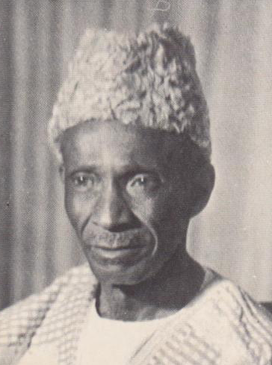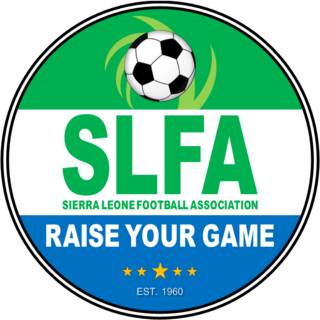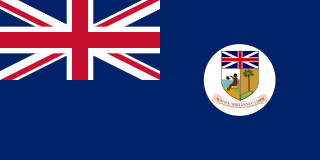Twenty-first century
Years in West Africa | |
|---|---|
| Sovereign states |
|
States with limited recognition | |
Dependencies and other territories |
|
This is a timeline of History of Sierra Leone . Each article deals with events in Sierra Leone in a given year.

Sierra Leone, officially the Republic of Sierra Leone, is a country on the southwest coast of West Africa. It shares its southeastern border with Liberia, and the northern half of the nation is surrounded by Guinea. Covering a total area of 71,740 km2 (27,699 sq mi), Sierra Leone has a tropical climate, with diverse environments ranging from savanna to rainforests. The country has a population of 7,092,113 as of the 2015 census. Freetown is the capital and largest city. The country is divided into five administrative regions, which are subdivided into 16 districts.

Freetown is the capital and largest city of Sierra Leone. It is a major port city on the Atlantic Ocean and is located in the Western Area of the country. Freetown is Sierra Leone's major urban, economic, financial, cultural, educational and political centre, as it is the seat of the Government of Sierra Leone. The population of Freetown was 1,055,964 at the 2015 census.

The national flag of Sierra Leone is a tricolour consisting of three horizontal green, white and blue bands. It was adopted in 1961, Sierra Leone's independence year, to replace the British Blue Ensign defaced with the arms of the Crown Colony of Sierra Leone.

Sir Milton Augustus Strieby Margai was a Sierra Leonean medical doctor and politician who served as the country's head of government from 1954 until his death in 1964. He was titled chief minister from 1954 to 1960, and then prime minister from 1961 onwards. Margai studied medicine in England, and upon returning to his homeland became a prominent public health campaigner. He entered politics as the founder and inaugural leader of the Sierra Leone People's Party. Margai oversaw Sierra Leone's transition to independence, which occurred in 1961. He died in office aged 68, and was succeeded as prime minister by his brother Albert. Margai enjoyed the support of Sierra Leoneans across classes, who respected his moderate style, friendly demeanor, and political savvy.

"High We Exalt Thee, Realm of the Free" is the national anthem of Sierra Leone. Written by Clifford Nelson Fyle and composed by John Akar in a nationwide competition, it was adopted in 1961 when the country became independent from the United Kingdom, replacing "God Save The Queen". The Constitution of Sierra Leone, 1991, makes it the responsibility of every citizen of Sierra Leone to "respect its ideals and its institutions", including the national anthem.

Sierra Leone maintains formal relations with many Western nations. It also maintains diplomatic relations with the former Soviet Bloc countries as well as with the People's Republic of China.

The Sierra Leone national football team represents Sierra Leone in association football and is governed by the Sierra Leone Football Association. It has qualified for Africa Cup of Nations three times.

Islam is the largest and majority religion in Sierra Leone. Based on the 2015 Pew Research Center research, 78% of Sierra Leone's population is Muslim.

Sierra Leone – United States relations are bilateral relations between Sierra Leone and the United States.

The Dominion of Sierra Leone was an independent sovereign state with Queen Elizabeth II as its head of state between independence on 27 April 1961 and becoming the Republic of Sierra Leone on 19 April 1971.

Elizabeth II was Queen of Sierra Leone from 1961 to 1971, when Sierra Leone was an independent constitutional monarchy. She was also the monarch of other Commonwealth realms, including the United Kingdom. Her constitutional roles in Sierra Leone were mostly delegated to the governor-general of Sierra Leone.

The Colony and Protectorate of Sierra Leone was the British colonial administration in Sierra Leone from 1808 to 1961, part of the British Empire from the abolitionism era until the decolonisation era. The Crown colony, which included the area surrounding Freetown, was established in 1808. The protectorate was established in 1896 and included the interior of what is today known as Sierra Leone.

Israel–Sierra Leone relations are the official and diplomatic relations between the State of Israel and the west African Republic of Sierra Leone. Both nations have friendly ties, established in 1961 when Sierra Leone gained independence. Israel has no embassy in Freetown, and is represented through its embassy in Senegal. Likewise, Sierra Leone does not maintain a diplomatic representation in Israel, and is instead represented by its consul of honor, Israeli media personality David Ben Basat. In August 2023, Sierra Leone announced its intention to open an embassy in Jerusalem.

Canada–Sierra Leone relations refer to bilateral relations between Canada and Sierra Leone. Ties were first established in 1961, when Sierra Leone gained its independence. Canada is represented in Sierra Leone through its High Commission in Accra, Ghana. Sierra Leone is represented in Canada through its embassy in Washington, D.C.

Sierra Leone remained a British colony throughout World War II. As such, it fought alongside the Allies against the Axis. No large scale battles or military action took place in or around Sierra Leone during the war. However, the colony played a critical role in supporting the Allies throughout the conflict, with Freetown acting as an important convoy station.

A number of new Sierra Leonean medals were instituted in the decade from 1961, when the country gained independence, until 1971, when Sierra Leone was declared a republic.